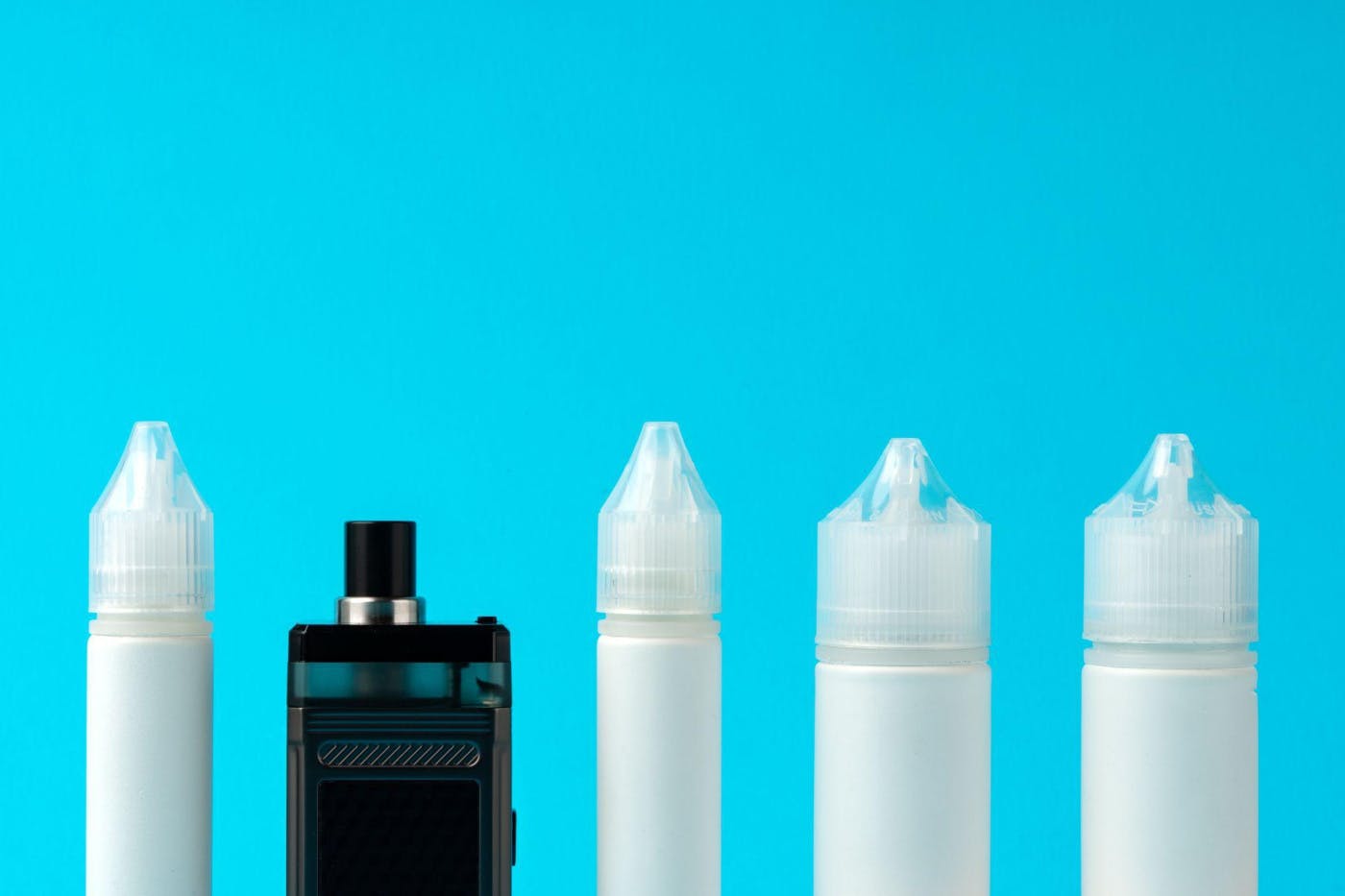How Dangerous Is Vaping for Minnesota Teens and Young Adults?

Vaping has become popular in Minnesota, especially among young people. This trend may be cause for grave concern. While vapes were introduced as a healthier alternative to traditional smoking, studies have raised questions about the safety of vaping.
Key Takeaways
- Vaping poses various health risks, including respiratory and cardiovascular issues, and potential long-term effects are still unknown.
- Minnesota has implemented strict regulations on the sale and use of e-cigarettes, including age restrictions, flavor bans, and packaging requirements.
- Despite this, vaping remains popular for Minnesotans, especially among teens. Recent surveys have shown that one in four high school students admit to using e-cigarettes.
What Is Vaping?
Vaping means inhaling vapor from an e-cigarette, often known as a vape. Unlike traditional cigarettes, which burn tobacco to release smoke, e-cigarettes operate by heating a liquid, which produces vapor. This liquid typically contains nicotine, flavorings, and other chemicals designed to make it more pleasant.
E-cigarettes and Vaping Devices
E-cigarettes range from small, pen-like devices to larger, box-shaped mods. The essential components of an e-cigarette are a battery, a heating element, and a cartridge or tank that holds the e-liquid. When the user turns the device on, the heating element vaporizes the e-liquid, creating vapor for the user to inhale.
E-liquids and Ingredients
E-liquids generally consist of a mixture of the following components:
- Nicotine: A highly addictive substance found in tobacco plants. The concentration of nicotine in e-liquids can vary widely, from nicotine-free options to high concentrations.
- Propylene glycol (PG) and vegetable glycerin (VG): These are the primary carriers for the nicotine and flavors. PG is known for providing a more potent “throat hit” (similar to smoking), while VG produces larger vapor clouds.
- Flavorings: E-liquids come in a wide array of flavors, ranging from traditional tobacco and menthol to fruity, sweet, and exotic blends. The presence of these flavors is a significant draw, especially for younger users.
Is Vaping Safe?
Vaping is often marketed as a safer alternative to traditional smoking, but the safety of e-cigarettes is a complex issue. Here are some key considerations.
1. Nicotine Addiction and Health Risks
Nicotine is a highly addictive substance, regardless of the delivery method. It can affect adolescent brain development, leading to long-term consequences on cognitive functions, memory, and attention. In addition, nicotine addiction can exacerbate mental health issues such as anxiety and depression.
2. Unknown Long-Term Effects
While vaping has been popularized as a safer alternative to smoking, the long-term health effects remain largely unknown due to the relatively recent advent of e-cigarettes. The long-term impact on heart, lung, and brain health is still being studied. Early findings indicate that long-term vaping can lead to chronic respiratory conditions and cardiovascular problems, similar to traditional smoking.
3. Impact on Youth and Non-Smokers
The accessibility and variety of flavors have made vaping particularly attractive to young people. However, nicotine exposure during adolescence can cause long-lasting harm to brain development, promote addiction, and increase the likelihood of smoking traditional cigarettes later in life. These harmful effects are particularly concerning as many youths are unaware of the potential risks associated with vaping.
4. Regulatory and Safety Considerations
Unlike nicotine replacement therapies approved by health authorities, e-cigarettes are not currently regulated as cessation devices. The lack of regulation means there is variability in product quality and safety, which can pose additional risks to users. Contaminants and variations in nicotine content can further complicate the safety profile of these products.
PRO TIP: E-cigarette companies often market their products as safe or safer alternatives. Be skeptical of such claims and seek independent research to understand the risks involved.
Potential Health Concerns from Vaping

Vaping is often presented as a safe alternative to smoking. However, the data gives reasons for skepticism and concern.
1. Respiratory Issues
Vaping can cause a range of respiratory problems. The inhalation of aerosolized chemicals can irritate the lungs and airways, leading to chronic bronchitis and emphysema. Studies have shown that individuals who vape are at an increased risk of developing chronic obstructive pulmonary disease (COPD), a severe lung condition that obstructs airflow and makes breathing difficult.
2. Cardiovascular Concerns
Nicotine, a common ingredient in e-liquids, is a stimulant that increases heart rate and blood pressure. Nicotine can elevate the risk of developing cardiovascular diseases, including hypertension and heart attacks. Even in the absence of nicotine, the other chemicals in e-liquids can contribute to vascular inflammation and oxidative stress, further increasing cardiovascular risks.
3. Mental Health Implications
The use of nicotine-containing e-cigarettes has been linked to mental health issues such as anxiety, depression, and stress. Nicotine addiction can worsen these symptoms, creating a cycle of dependence. Furthermore, young people are particularly vulnerable to the neurotoxic effects of nicotine, which can affect brain development and lead to long-term cognitive and behavioral problems.
4. Chemical Exposure and Toxicity
Vaping exposes users to various harmful chemicals, including formaldehyde, acetaldehyde, and acrolein, which are known to be toxic to human cells. Some e-liquids also contain heavy metals like lead, nickel, and tin, which can leach into the vapor from the device’s heating elements. These substances can cause cellular damage and increase the risk of cancer over time.
5. Secondhand Exposure
Just as with traditional cigarettes, vaping can affect bystanders through secondhand exposure to the aerosol. This is particularly concerning in enclosed spaces where the concentration of harmful chemicals can be higher. Secondhand exposure can be hazardous for children, pregnant women, and individuals with pre-existing health conditions like asthma.
6. Potential “Gateway” Substance
There is a concern that vaping may serve as a gateway to traditional smoking, especially among young people. Many studies have found that adolescents who use e-cigarettes are more likely to start smoking conventional cigarettes later. This dual use increases the risk of nicotine addiction and related health issues.
PRO TIP: Minnesota offers resources to help vape users quit. One prominent example is the "My Life, My Quit" program, which provides free support for teens and young adults looking to quit vaping. To learn more, visit the Quit Partner website.
Vaping Laws in Minnesota
Due to the questionable (and potentially dangerous) nature of vaping, Minnesota has passed several laws to regulate the use of e-cigarettes.
1. Age Restrictions
Minnesota enforces strict age restrictions on the sale and use of e-cigarettes. The minimum legal age to purchase or possess vaping products is 21, aligning with federal regulations established in December 2019. Retailers are required to verify the age of purchasers and cannot sell to individuals under 21. Violations, including underage sales or possession, can result in fines and other legal consequences.
2. Clean Indoor Air Act
The Minnesota Clean Indoor Air Act (MCIAA) has been amended to include vaping. This law means that the use of e-cigarettes is prohibited in indoor public places where smoking is banned, such as restaurants, bars, workplaces, healthcare facilities, public schools, and government buildings. This legislation aims to protect the public from the harmful effects of secondhand vapor, which can contain nicotine and other toxic substances.
3. Flavor Bans
Several municipalities in Minnesota have implemented bans on the sale of flavored vaping products, including menthol. These bans are primarily designed to reduce the appeal of vaping to young people, who are more likely to be attracted to flavored products. Flavored products are often restricted to adult-only retail environments to limit youth access. A statewide ban on flavored e-cigarettes is in the works.
4. Packaging and Labeling Requirements
Minnesota law requires that all e-liquids sold in the state be sealed in child-resistant packaging to prevent accidental ingestion by children. Additionally, products must have clear labeling that includes ingredients and nicotine content, helping consumers make informed decisions. This regulation is part of broader efforts to ensure the safety and well-being of all consumers, especially vulnerable populations like children.
5. Taxation
Vaping products in Minnesota are subject to a 95% tax on the wholesale price. This tax applies to both pre-filled cartridges and bottled e-liquids. The revenue from this tax is used to fund public health initiatives, including smoking cessation programs. This high tax rate is also intended to discourage the use of vaping products, particularly among younger and more price-sensitive consumers.
6. Enforcement and Penalties
Retailers and individuals who violate Minnesota's vaping laws may face penalties, including fines and the suspension of sales licenses. The state also enforces strict controls over the sale and distribution of e-cigarettes, requiring retailers and distributors to be licensed. Additionally, specific restrictions apply to self-service displays and vending machines to prevent underage access.
PRO TIP: To stay informed about the latest regulations and research regarding e-cigarettes, visit the websites of health organizations like the CDC or the Minnesota Department of Health.
Vaping in Minnesota: A Growing Problem for Children and Teens
Despite the health concerns and legal barriers associated with e-cigarettes, vaping has been growing in popularity in Minnesota. Unfortunately, it is trendy among young people – including those who are legally barred from using e-cigarettes.
1. Prevalence of E-cigarette Use Among Students
As of the latest data, about 20.5% of high school students and 4.1% of middle school students reported using tobacco products in the past 30 days. E-cigarettes are the most commonly used tobacco product among these groups, with usage rates at five times those of conventional cigarettes.
2. Nicotine Dependence in Youth
A concerning aspect of the survey findings is the high level of nicotine dependence among youth who vape. About 70.4% of students using e-cigarettes reported signs of dependence, such as intense cravings and withdrawal symptoms. This dependency is particularly troubling given that nicotine can disrupt adolescent brain development, affecting learning, memory, and attention.
3. Access and Awareness
Many young users report obtaining e-cigarettes from friends, local vape shops, or online, despite regulations aimed at restricting access to those under 21. Furthermore, there is a significant gap in awareness regarding the risks associated with vaping; a large proportion of youth believe there is minimal risk involved, which underscores the need for enhanced public health education efforts.
4. Flavored Products and Advertising
The majority of Minnesota students who have tried e-cigarettes were first attracted to flavored products, which are particularly appealing to younger users. This issue is exacerbated by widespread exposure to e-cigarette advertising, with nearly 88.4% of high school students having seen ads for e-cigarettes in the past month.
Legal Recourse for Victims of Vaping in Minnesota
In Minnesota, individuals who have suffered health issues or other damages due to vaping may have several legal avenues for seeking compensation.
1. Product Liability Claims
Individuals who experience adverse health effects from vaping may file product liability lawsuits against manufacturers, distributors, and retailers of vaping products. These claims can be based on defective design, manufacturing defects, or inadequate warnings about the risks associated with the product. For instance, the manufacturer could be held liable if a product contains harmful chemicals that were not adequately disclosed.
2. Negligence and Breach of Warranty
Victims may also pursue negligence claims if they believe the responsible parties failed to exercise reasonable care in producing or selling their vaping products. This can include cases where companies did not adequately warn users of potential dangers, such as nicotine addiction or respiratory issues. Similarly, claims for breach of warranty may be filed if the product does not meet the quality standards the seller or manufacturerpromised.
3. Claims Against Retailers for Underage Sales
Minnesota law prohibits the sale of vaping products to individuals under the age of 21. Retailers violating this law can face legal action, including civil penalties and lawsuits from affected individuals or their guardians. In cases where underage individuals obtain vaping products and suffer harm, parents or guardians may seek damages from the retailers who sell these products illegally.
4. Legal Assistance and Representation
Individuals considering legal action related to vaping should seek advice from attorneys specializing in personal injury and product liability law. Legal professionals can offer guidance on the best course of action, whether it involves negotiating settlements, filing lawsuits, or joining class action suits.
Protecting Minnesota’s Youth from the Dangers of Vaping
While often marketed as a safer alternative to traditional smoking, vaping poses significant health risks and uncertainties, especially for young people. As this trend progresses, Minnesota must confront the rising threat through new laws, public education, and support for those seeking to quit.
For individuals who have suffered health complications due to vaping, legal avenues exist to seek compensation, including product liability and negligence claims. If you’ve been impacted by the dangers of vaping, SiebenCarey can help.
SiebenCarey is the ONLY Minnesota law firm that has spent 70 years protecting the rights of injury victims. When you entrust SiebenCarey with your case, you’ll get the full benefit of:
- Our decades of experience in Minnesota law
- An unparalleled record of successful settlements and verdicts
- Ample legal resources to help overcome any challenge from insurance companies and corporations
- An award-winning team of lawyers, paralegals, and legal investigators
- The “Know Your Rights” guarantee of personal care, clear communication, and steadfast dedication to every client
Schedule a free consultation today, and we can answer all your questions! Let SiebenCarey help you get the compensation you deserve.
Vaping in Minnesota FAQs

Is vaping safer than cigarettes?
While vaping may reduce exposure to some harmful substances found in cigarette smoke, it is not without risks, including addiction and potential lung and heart issues.
What are the primary health risks associated with vaping?
Vaping can lead to a variety of health concerns, including:
- Respiratory issues
- Cardiovascular problems
- Nicotine addiction
- Exposure to toxic chemicals.
The long-term effects of e-cigarette use are still being studied.
Can vaping help me quit smoking?
Some people use e-cigarettes as a smoking cessation tool, but the FDA does not approve them for this purpose. There is limited evidence supporting their effectiveness in helping people quit smoking. It's recommended to use FDA-approved nicotine replacement therapies and seek guidance from healthcare professionals for a safer and more effective approach to quitting.
Are there specific laws regulating vaping in Minnesota?
Yes, Minnesota has laws regulating e-cigarettes, such as restricting the sale of e-cigarettes to individuals under 21, prohibiting vaping in certain public places, and requiring child-resistant packaging for e-liquids.
What are the signs of nicotine addiction from vaping?
Signs of nicotine addiction can include cravings for e-cigarettes, withdrawal symptoms like irritability and anxiety when not vaping, and difficulty stopping even when wanting to quit. Increased tolerance, where more vaping is needed to achieve the same effect, is also a common sign.
What should parents know about youth vaping?
Parents should be aware that vaping is prevalent among youth, often due to the appeal of flavors and targeted marketing. Educating children about the risks of nicotine and vaping, monitoring for signs of use, and setting clear expectations and rules around substance use are important steps parents can take.
How can I quit vaping?
Minnesota offers resources like the "My Life, My Quit" program, which provides free support for teens and young adults looking to quit vaping. Visit the Quit Partner website to learn more.
Can I file a lawsuit if I've been harmed by vaping?
Yes, you may be able to file a lawsuit for product liability, negligence, or breach of warranty if vaping products have harmed you. It's advisable to seek legal counsel to explore your options.













